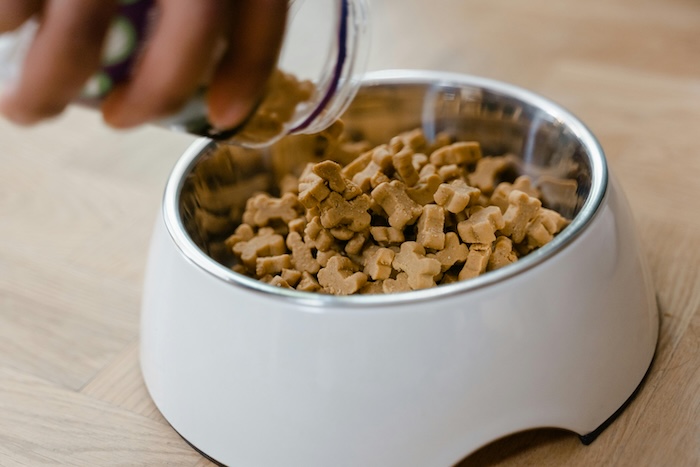Choosing the best is important for dog owners, and we understand the essence of diets for our furry companion’s well-being and health. Therefore, it comes as no surprise that several owners question whether the raw diet is better for the health of their dogs compared to the commercial kibble. Whenever you are in the market to shop for the right dog food, the entire array of options is available. It is often easier to choose the cheapest option; however, if you can, then it’s worth investing in a protein-rich, natural, raw diet, preventing any critical health issues in the future. Although pet parents are often divided between raw dog food and kibble, it is well worth a decision of what is best for you as well as your dog.

Making the Right Choice for Your Dog’s Health
Nutrition is an important consideration if you wish to give your pup a healthier and longer life, especially for toy breeds like Teacup Chihuahua. Raw and kibble diets have attained huge attention among dog owners, and making the right choice should rely on the dog’s unique lifestyle, requirements, and health conditions.
The Benefits of a Raw Diet
A raw diet is often termed as a Biologically Appropriate Raw Food (BARF) diet, aiming to offer dogs with raw bones, meat, and organs along with meager amounts of veggies and fruits. The approach tries to replicate what the dogs should eat in the wild with the following number of benefits:
Higher Nutritional Value
Raw food is unprocessed, preserving important nutrients like minerals, vitamins, and key enzymes that are often lost while cooking, as in acommercial-grade foods. This eventually leads to a diet enriched with natural ingredients that support dogs’ overall health.
Healthier Skin and Coat
The top-quality fats and proteins generally found in raw meat contribute to healthier skin and shinier coats in dogs. Giving them raw diets often shows signs of enhancements in the aesthetics and feel of their fur, making it more dynamic and soft. It is specifically true whenever comparing breeds like Havapoo Vs Maltipoo as both can benefit from enhanced coat and skin health offered by the raw diet.
Increased Energy Levels
Consider a natural diet for your dogs, which leads to higher levels of energy. Dog owners frequently report that their pets have become more active and highly alert when given raw diets instead of kibble.
Natural Dental Care
Raw bones offer more benefits by aiding in cleansing the teeth naturally. Chewing upon the bones reduces the buildup of plaque and promotes healthier gums that minimize the risks of any dental diseases.
The Benefits of Kibble
Dry dog food, or the kibbles, is one of the prominent options for pet owners globally due to its affordability and convenience. Irrespective of its simplicity, kibbles offer several health benefits to your pets.
Nutritionally Balanced Formulas
Premium-grade kibbles are distinctively formulated to meet your dogs’ nutritional needs while ensuring their appropriate intake of minerals, proteins, carbohydrates, and vitamins. Numerous brands offer better options that cater to unique dog breeds, age groups, and health needs.
Convenience and Storage
The longer shelf life of the kibble and the ease of use make it a practical option for busier dog owners. It does not involve any preparation and is left out for your furry companions to graze on throughout the data without risking spoilage.
Variety of Options
Dog owners come across a massive range of kibble options streamlined to their varied dietary requirements. There is always a kibble variety to match whenever your dog needs high-protein kibble, grain-free food, or formula streamlined for sensitive stomachs.
Cost-Effective Solution
Kibble is a cost-effective option compared to raw food, mainly when feeding more than one dog. Its affordability never compromises nutritional values, with top-grade brands offering ideal options that are often accessible to a massive array of budgets.

Comparing Raw Food and Kibble
Whenever you are deciding between kibble and raw food, it is important to find out how each option is performing in varied areas of your dog’s lifestyle and health. The diets offer unique benefits and are appealing options to different pets and their owners.
Nutritional Content
Raw food offers higher levels of minerals, vitamins, and enzymes that stay intact since it is entirely unprocessed. It offers a new edge to raw food whenever it arrives at delivering natural nutrients. Alternatively, kibble is specifically formulated to offer a well-balanced diet with important nutrients, with a few of these getting lost during the whole cooking process. But the premium-grade kibble brands supplement their formulas, ensuring that the dogs are getting a whole range of key nutrients.
Skin and Coat Health
Dogs who consume a raw diet often show signs of enhancements in their coat and skin health due to the higher levels of proteins and natural fats often found in raw meat. It eventually leads to a healthier or shinier coat. Kibble promotes better coat and skin health, mainly the ones that come with added omega fatty acids; however, the impact is not as far as the raw foods.
Energy Levels and Vitality
The natural or nutrient-dense ingredients present in raw foods often result in elevated levels of energy in dogs. Pet owners often report that their dogs are turning more active and alert with the raw diet. However, kibble offers a consistent level of energy, specifically if you are selecting the premium-grade formula designed for active dogs. The energy boost that is offered by the kibble is often steady; however, raw food offers visible signs of enhanced vitality.
Dental Health
A raw dog food diet is often praised for the natural benefits it brings to dental health. Chewing upon the raw bones can help remove plaque and minimize tartar buildup, which promotes better dental health. Specifically, kibble of the crunchier varieties can help clean dogs’ teeth by scraping off plaque while chewing. But raw bones offer a more affordable natural toothbrush than kibble.
Convenience and Practicality
Raw food needs careful handling and proper preparation to prevent contamination, which makes it labor-intensive for pet owners. On the contrary, kibble is extremely convenient and needs no preparation while being seamlessly stored. For busier dog owners, the convenience offered by kibble makes it the best choice, as it is quick to serve and does not spoil like raw food.
Cost Considerations
Giving your dog a raw diet is more expensive than kibble, mainly when you buy premium cuts of meat along with organic ingredients. Kibble is often an affordable option, mainly when purchased in bulk. Although raw food offers greater nutritional perks, kibble offers a cost-effective option without impacting balanced nutrition.
Customization and Variety
Raw food diets come with greater flexibility to streamline your dog’s meal time to meet their needs, like choosing specific meats or adjusting the portion sizes for the adequate management of weight. Kibble offers greater variety, with the different formulas often streamlined for varied health conditions, breeds, and age groups. Raw foods enable a greater level of personalization as kibble offers a massive array of specialized formulas catering to dogs with distinctive dietary requirements.
Which Diet is Right for Your Dog?
The decision on whether to feed raw food or kibble depends on your dog’s particular needs, your schedule, and your pocket. Raw diets can be specifically suitable for dogs with certain diseases and for owners with time and money to prepare feed for their dogs every day. Kibble, however, is a convenient and reasonable solution for most dogs and active families.
It is still common to find pet owners who give raw food diets for some meals and kibble for the rest of the day. This solution can help your dog get the raw diet’s natural advantages along with the nutrient completeness and easy feeding of kibble.
Conclusion
There are often conflicting opinions when choosing between raw dog food and kibble. There is, however, no one answer to it, as it depends on you making the best choice for your furry companion. Everything is about locating the right type of dog food that can help with digestion while considering the ethics and practicality. Ensure getting dog foods with fewer ingredient lists that consist of specific fruit, meats, veggies, and no chemicals. The rest narrows down to personal choices; however knowing about the right nutritional needs will help you make the best choice for your dog.
